Joan Witt wrote, "Many streets honor early residents and were often part of the family lands. Thompson Avenue was once part of the lands owned by Josiah Thompson. Park Boulevard is actually Thompson Park Boulevard, named for land given to the city by Will L. Thompson. Many of the Thompson family members owned land on the Boulevard and built the first homes there. Previously they lived along Thompson lane which no longer exists."
The family of Josiah Thompson is common in East Liverpool. As a result of that family there was a Thompson Store, a Thompson Music Store, a Thompson Hotel, several Thompson houses, a Thompson Park, Thompson Row, Thompson Lane also known as Thompson Place, Thompson Pottery, even a Thompson Hill.
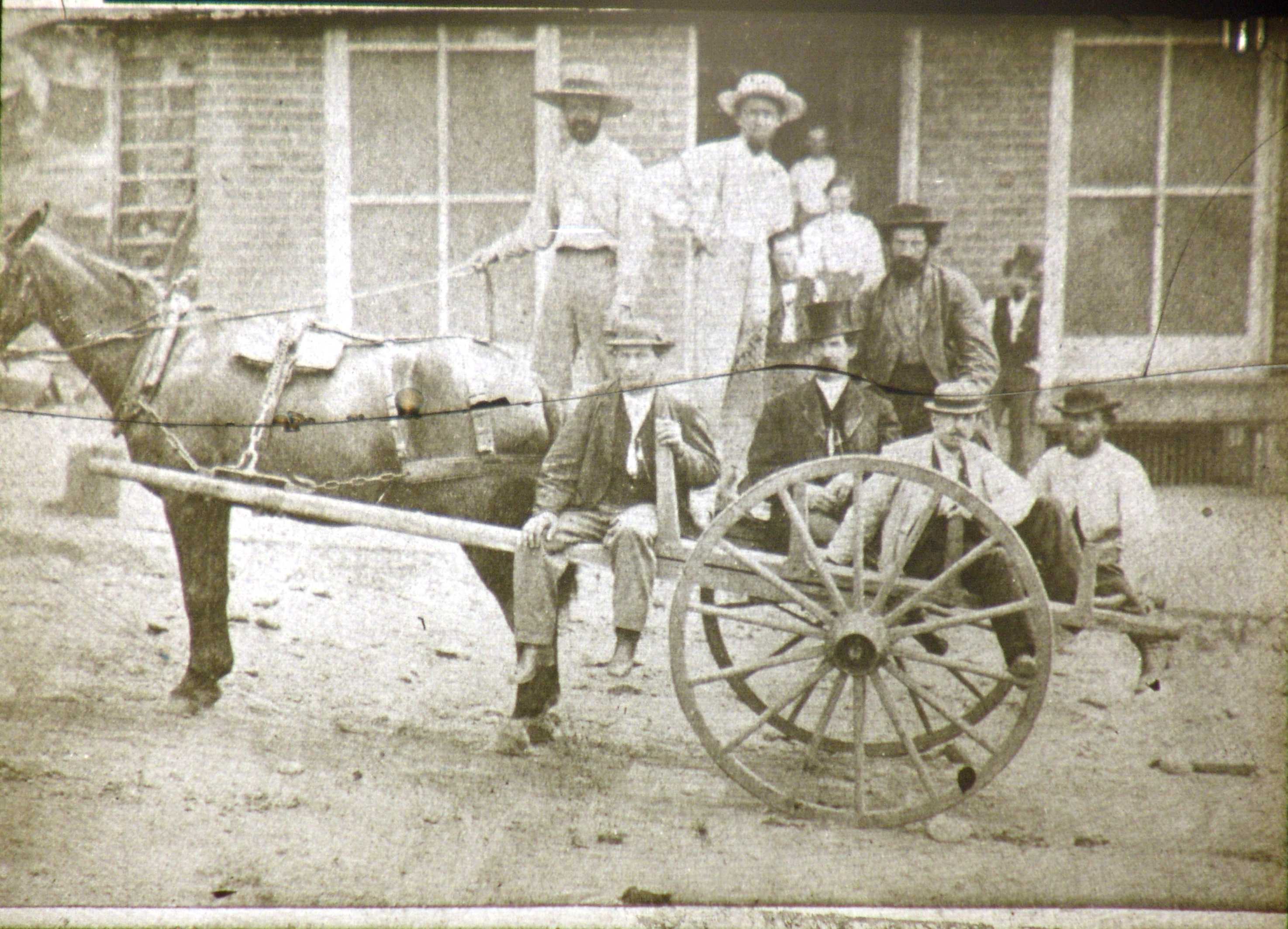
THOMPSON STORE
Magic Lantern Glass Slide picture from collection of Dr. Charles H. Birkett. Date of Picture unknown. Picture taken in front of the Josiah Thompson Store which was located at the Northeast Corner of Third Street and Broadway. The Thompson Store would become the Thompson House also Known as the Thompson Hotel. Shown in the picture are Thompson children Cassius and John. Also Si Morrison, H. L. Simms, (Sitting on the Dray) Bill Thompson, John Hamm, Meridan Hill, Harry Gaston.
THOMPSON HOUSE OR HOTEL
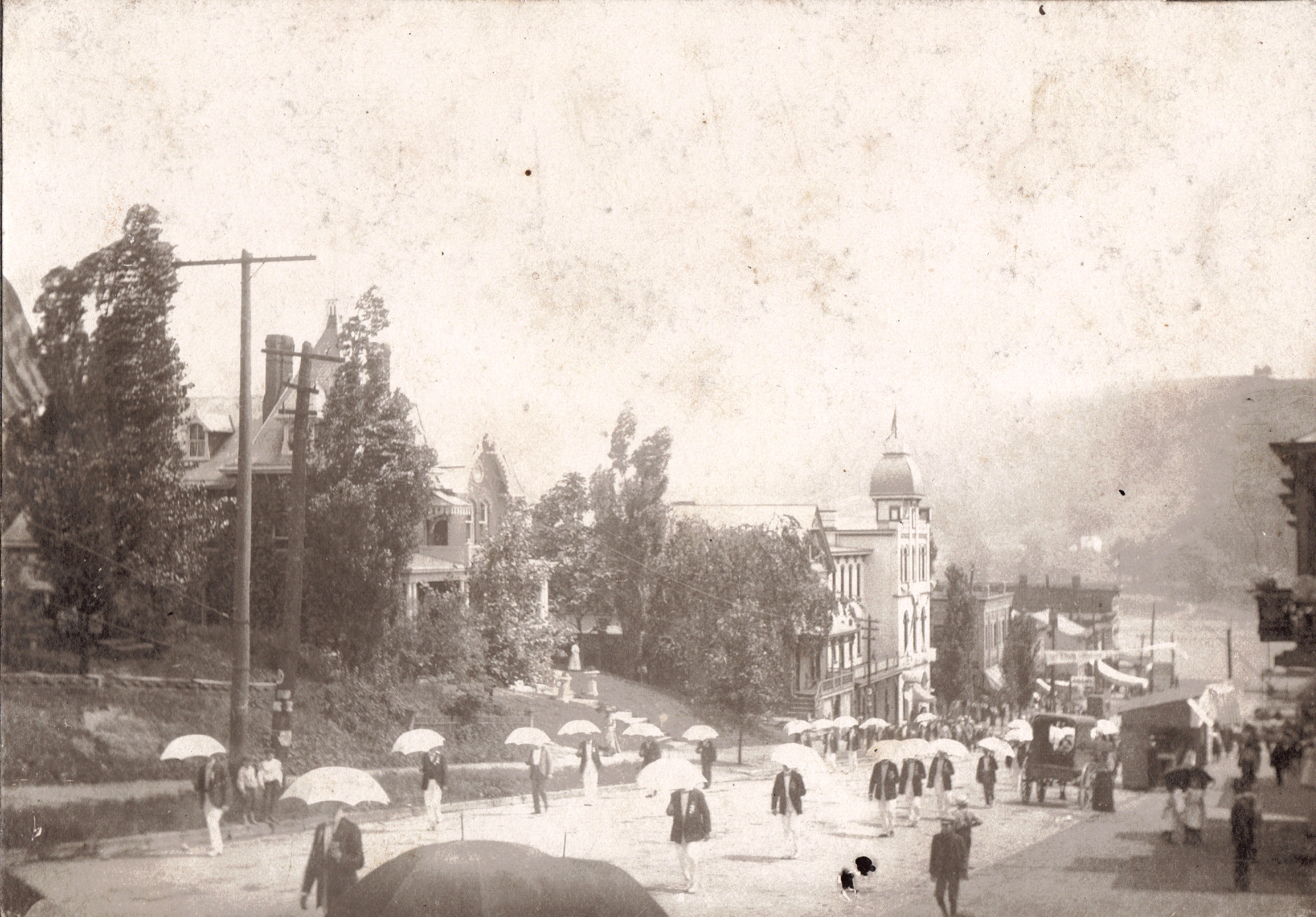
Looking down Broadway towards the River, Elks Parade 1899 between 3rd and 4th streets. The Thompson Hotel is left with the odd looking top.
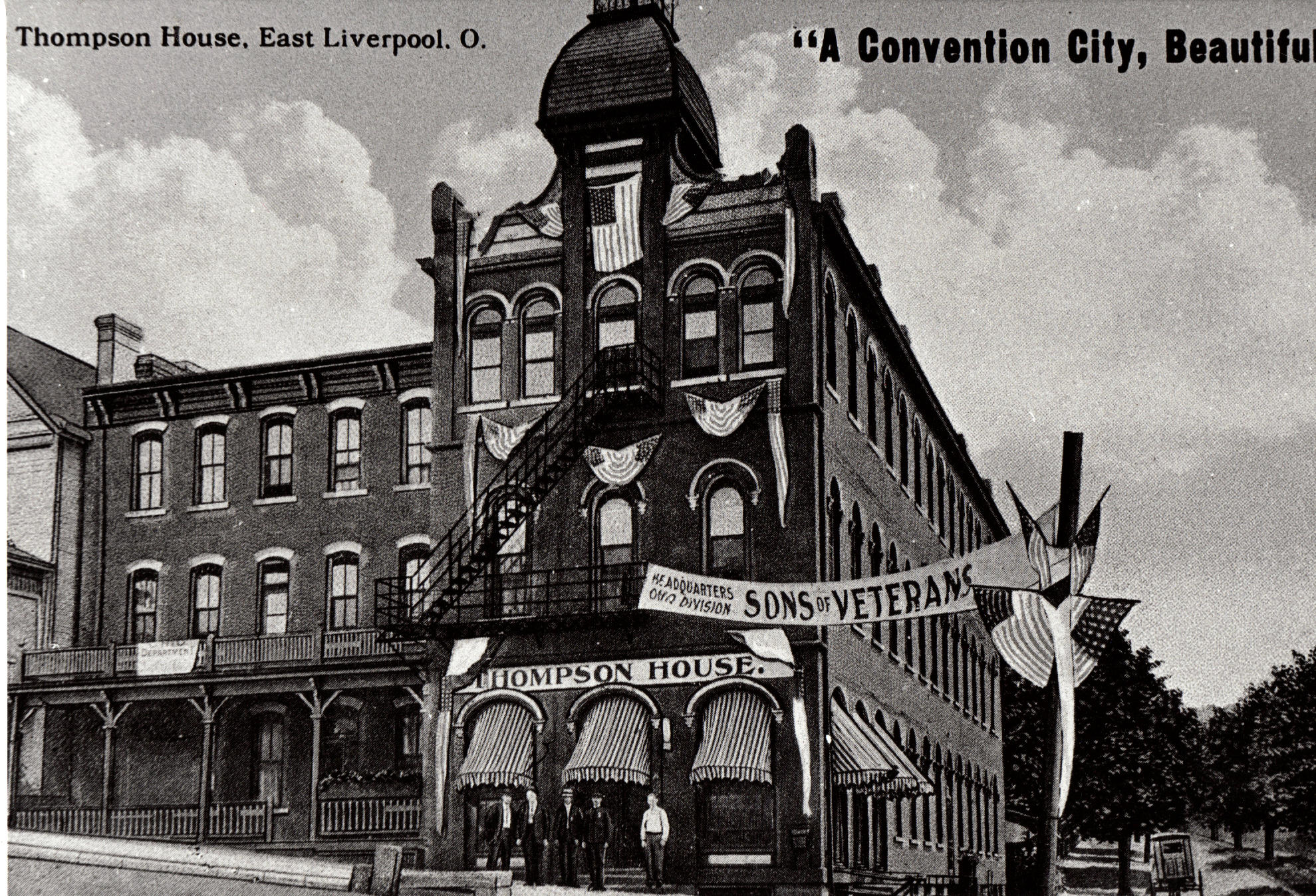
Thompson Hotel, probably early 1900s.
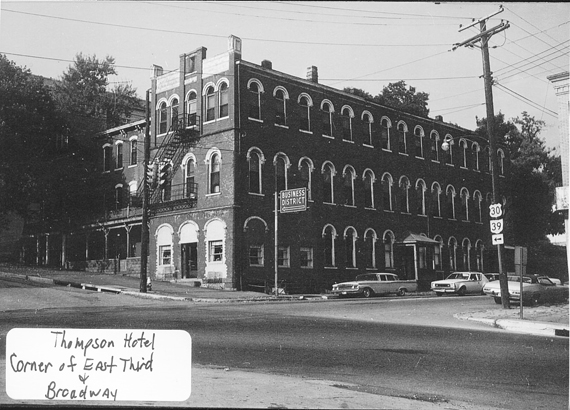
The above picture comes from the Inger Lloyd, of Wellsville, collection. Many thanks to her for the picture.
From the 1974 Tri-State Pottery Festival Souvenir Program:
Thompson Hotel |
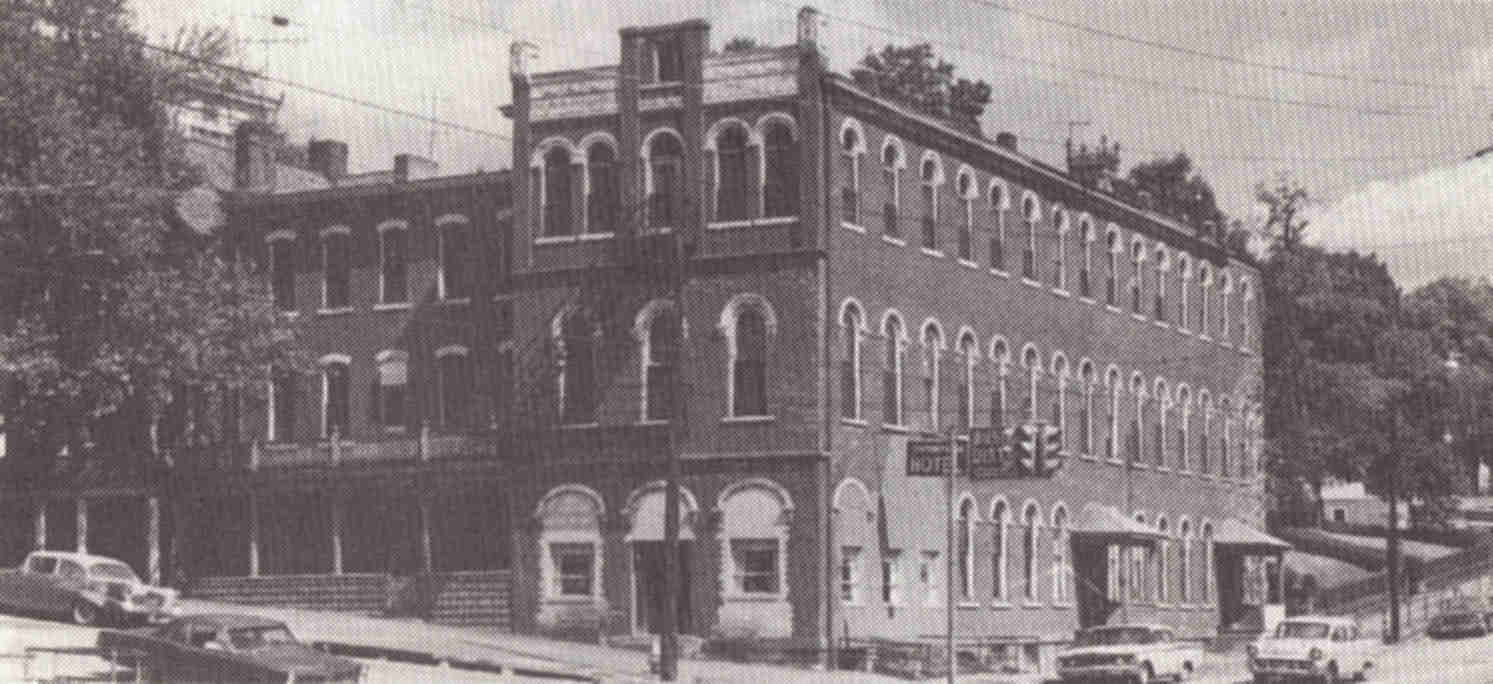 |
|
| A section of the mosaic floor at the Thompson Hotel |
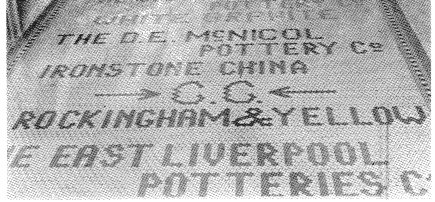 |
The Thompson House Revisited: An Early History, 1856 to 1912
by Michael A. Bertheaud
Educational Services Coordinator East Liverpool Museum of Ceramics
In 1974 the Thompson House hotel was chosen to adorn the Tri-State Pottery Festival's commemorative ware. It was an appropriate choice because the building had been slated for demolition as part of the Route 30 highway improvement project. The demolition came to pass and, although some individuals barely noticed its demise, others felt a deep sense of loss for the building which had been part of the city for well over one hundred years. Fortunately, the hotel's most famous feature, the tile floor from its lobby, was removed from the building and preserved for future generations
The lobby floor was made of thousands of white, gray, and various shades of brown and green tiles and formed the names of seventeen potteries or pottery supply companies. The "Roll Call" was five and one-half feet wide and nearly thirty feet long. Prior to the demolition of the Thompson House in 1976, the late William Godfrey III had the floor removed and placed in storage. Through the continued generosity of the Godfrey family, the tile floor was recently installed as part of an exhibit in the East Liver-pool Museum of Ceramics.
One of the primary responsibilities of a museum is to research the artifacts in its collection. For this reason, the staff of the museum began a study of the Thompson House hotel. Although this study is far from complete, the evidence which has already been examined has brought the early history of the Thompson House into a much sharper focus. The basic historical outline of the building (as remembered by local residents) is correct, although there are a number of inaccuracies which have crept into the story. Newspapers from the late nineteenth and early twentieth centuries and property deeds on file in the County Recorder's office have shed a good deal of light upon the early history of the Thompson House.
In December of 1856, Josiah Thompson, one of East Liverpool's most prominent citizens throughout the mid-nineteenth century, purchased lots 240 and 241 from John nj. Mitchell of Pittsburgh. The property's boundaries were Broadway and Cook (now Third) Streets with Apple Alley to the rear and lot 239 to the north. Upon this property, Josiah Thompson built a two-story building in which to operate his dry goods firm, J. Thompson and Company. It is commonly believed that the building was constructed in the early 1860's and this seems very likely. Unfortunately, it is impossible to prove or disprove at this time. Construction dates can usually be determined from the property's tax records. Regretfully, Columbiana County's tax records were lost in a fire at the county court house and a great deal of information went "up in smoke." The earliest written record (discovered thus far) of the building's existence is a listing in the Wiggins and Weaver's Directory of Steubenville, Wellsville, East Liverpool and Wellsburg of 1870. The listing simply states, "Thompson, J. & Co., dealers in dry goods, notions, and c., cor. Cook and Broadway."
In January, 1874, it was announced in the East Liverpool Gazette that Josiah Thompson intended to build a new home for J. Thompson & Company on the corner of Broadway and Second streets. It was also announced that the new building would include the music "emporium" of Professor William L. Thompson. The article noted that J. Buckley Abrams and a force of men were already at work excavating the cellar and that when the building was completed it would be "quite an improvement to our rapidly growing town." The Gazette noted on July 11, 1874 that the building would soon be completed and in September it ran advertisements stating J. Thompson & Company's determination "to close out their entire stock before moving to their New Building." One can assume that the move was completed shortly after the sale and that a "For Rent" sign was placed in the window of the building on Broadway and Cook Streets.
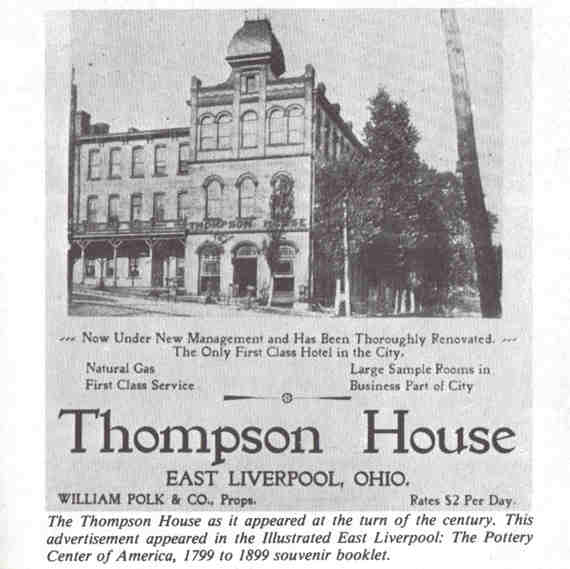
By January, 1876, the first floor of the future Thompson House was occupied by J. E. Bower's furniture store. On March 11, 1876, the East Liverpool Tribune stated that "Hall & Bevington have contracted with Mr. Josiah Thompson to remodel the old storeroom, on the corner of Broadway and Cook street, turning a portion of it into tenement houses." On March 15, Josiah Thompson sold the building to his two sons John C. and William L Thompson. By August the renovation of the second floor of the building had been completed and the Tribune advertised "Four rooms in Thompson's old store building, upstairs" and that the rooms were "Suitable for first-class dwellings...." In addition to the four rooms, the second floor included the dental office of L. Calvin. A Singer Sewing Machine office was moved into the first floor of the building as part of the furniture store in October. Within the month, however, it was announced that Bower's would soon go out of business and on November 11 the public was given notice that the remaining goods at Bower's were to be sold at public auction. By November 18, Thompson's old storeroom was, once again for rent.
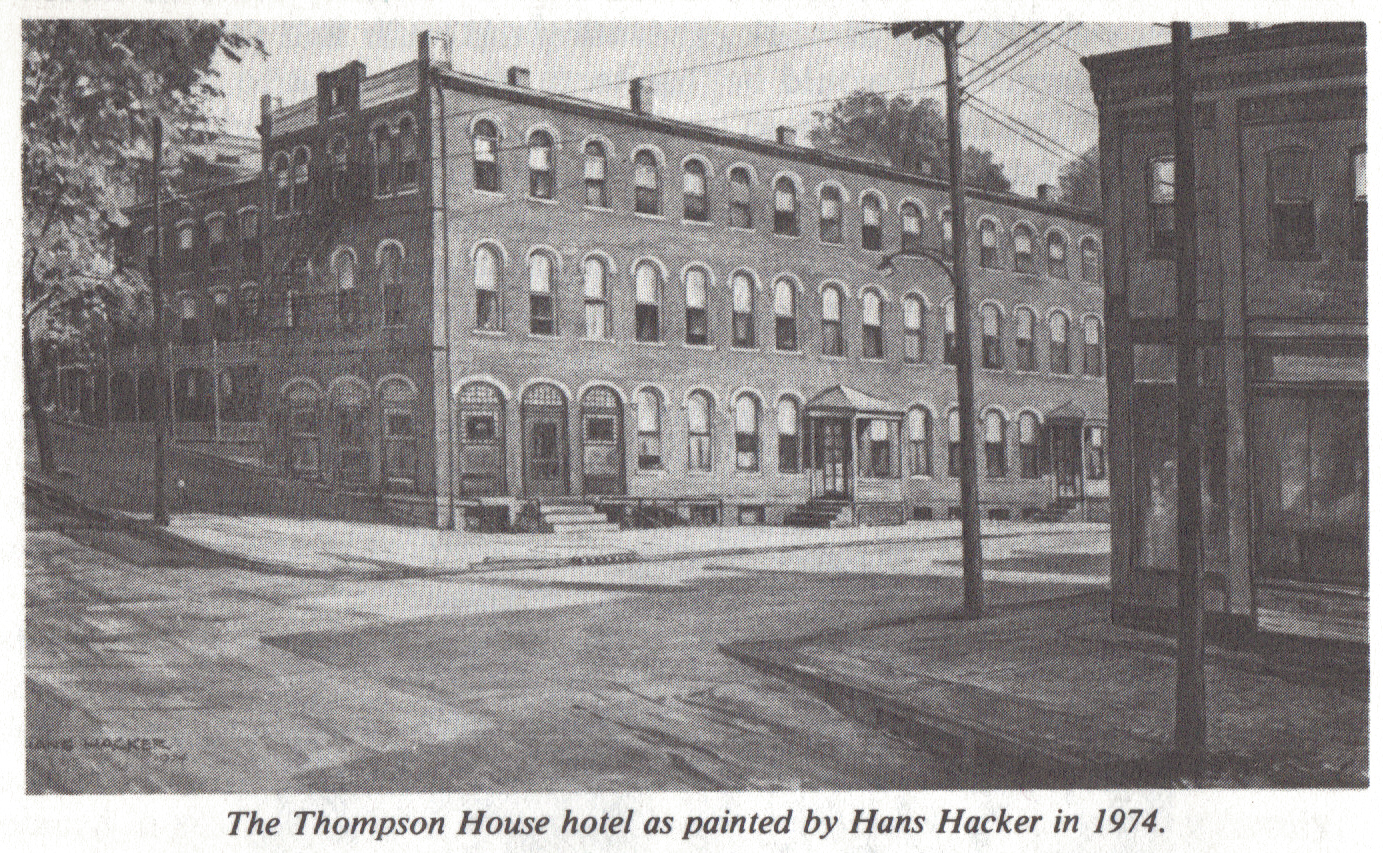
In late 1877 or very early 1878, William L. Thompson moved his music business into the building. Before doing so, he completely remodeled and refurnished the first floor commercial space. An article in the Tribune noted that Thompson's efforts had made the store "one of the most attractive places of business in this section of the State." After several years of business, W. L. Thompson & Company needed a larger building for its expanding music business and moved to a newly constructed building on Fourth Street. It was at this time that the two-story buiding on Broadway and Cook began its second life.
The East Liverpool Potters Gazette of May 11, 1882 announced that, "Thompson's old music building is being converted into a hotel to be occupied by mine host Seanor, of the Brunt House. A two-story wing will be added on Broadway, thirty-nine feet long. The building when completed will contain twenty-eight bedrooms, besides dining room, kitchen, office, sample room, etc".
This, of course, was the beginning of the Thompson House hotel under the proprietorship of William Seanor. Seanor apparently occupied the building in June, 1882 while construction was in progress on the new wing. Keep in mind that the building was still owned by John C. and William L. Thompson. This would seem to dispell the belief that the Thompson family was never associated with the hotel which bore its name. On February 2, 1884, William purchased John's share of the property which made William the sole owner.
In March, 1888, William Seanor announced that a third story would be added to the Thompson House. The plans, however, were abandoned. The third story was not added until 1892 when the Thompson House received new owners and proprietors. On June 18, 1892, William Seanor purchased the property from William L. Thompson for $10,500. Seanor immediately (June 20) sold the property to Henry Poke for $14,000. Although Henry Poke purchased the property, both he and William Poke (believed to be Henry's brother) were noted as being the new proprietors. They quickly made a number of improvements to the building which included electric lights for the office and dining room. On August 24, 1892, the Crisis noted the Pokes' plans for the hotel which included the addition of a third story:
Architect Scott is now engaged on the plans for the proposed additions "and improvements to the Thompson House, which he will probably have completed in about ten days, and the work will then commence. The plans contemplate the substitution of a window where the hall door now stands on the Broadway front, and a window for the Cook Street door leading to the office. The present hall partition will be taken out, and a winding stairway [will] replace the present stairs, while an elevator will be placed in the back end of the present hall. The clerk's office will be made smaller. In addition, another story will be placed on the old two-story part of the building, containing fourteen rooms. The whole plant will probably be heated by steam, and water closets and baths will be placed on each floor."
The Crisis later noted that the contract for these improvements had been awarded to Robert Hall and that the construction would begin shortly.
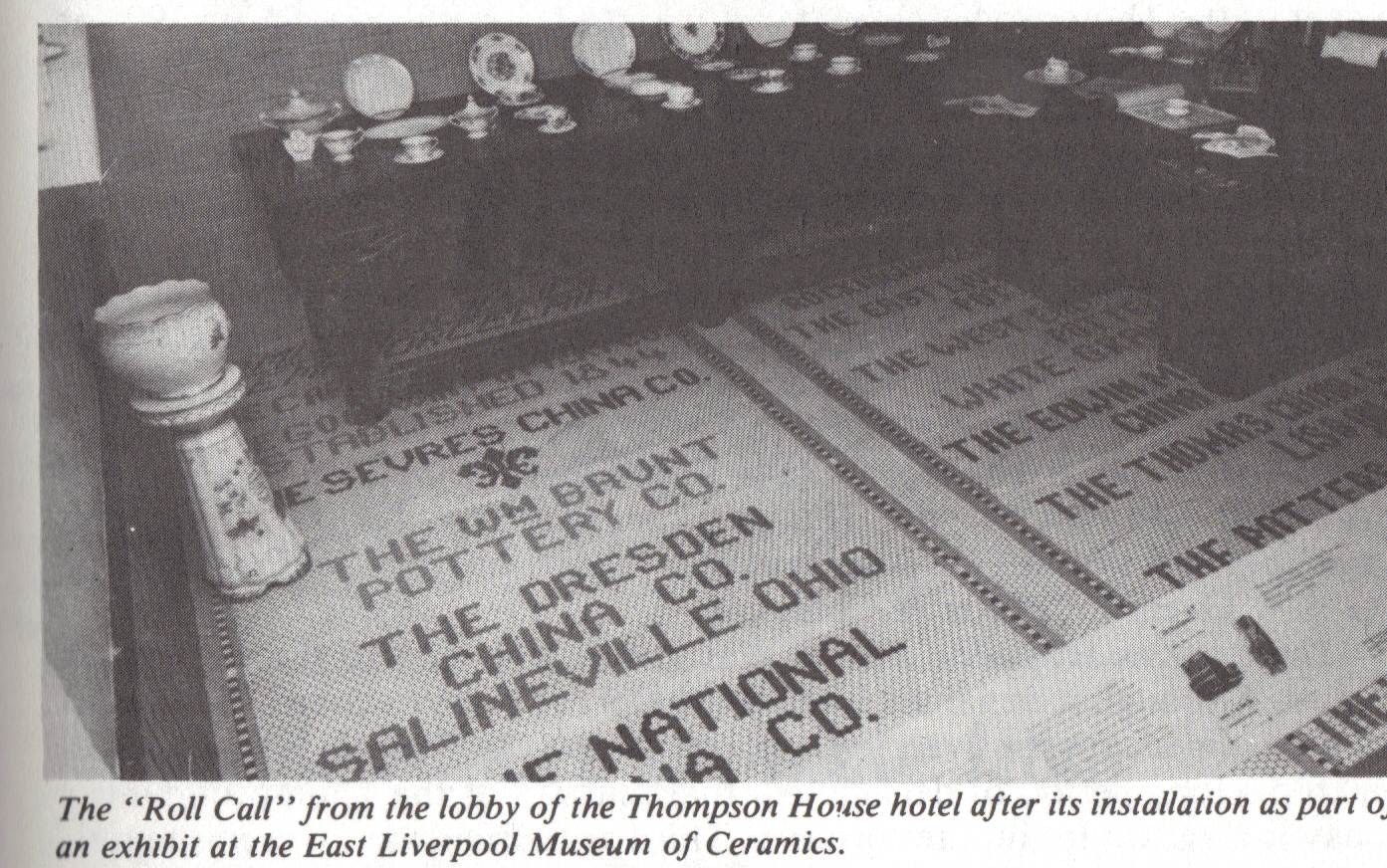
In September, 1892, Frederick Poke (believed to be another brother of Henry Poke) purchased one-half of Henry's interest in the Thompson House. Frederick became the sole owner of the hotel in October, 1893 when he purchased the remainder of Henry's share of the property. Frederick remained the sole owner of the hotel until March 1895 when Louise Polk, wife of William Poke, purchased one-half of the property from Frederick. (The two names, Poke and Polk, are used with a degree of interchangeability on the property deeds and it is apparent that the two names refer to members of the same family. In the interest of uniformity, the name Polk will be used hereafter.) In the city directory of 1898, the Thompson House is listed with Frederick Polk & Company as the proprietors and with William Polk as the manager. Louise Polk purchased another portion of Frederick Folk's intrest in the holel in May, 1903. Since Frederick was a resident of Pittsburgh throughout this periodit can be assumed that Louise and William Polk were completely responsible for the daily operation of the hotel. Louise Polk become the sole owner of the Thompson House when she purchased the remainder of Frederick Folk's share of the property in December, 1912.
The first decade of this century could be considered the most successful years in the life of the hotel. The Thompson House was unquestionably the pre-eminent hotel in East Liverpool. On March 5, 1906, the Evening Review noted,
That there is room in East Liverpool for another good hotel can be demonstrated almost every night at the Thompson House. It is seldom indeed that every room in that hotel is not crowded and the proprietor is compelled to send his guests to another building nearby for lodging. It is not a rare thing for a half-dozen houses in that vicinity to be occupied by guests of the Thompson House.
It seems that the clientele of the hotel was far greater than it could accom-modate during this period.
The Thompson House's pre-eminence is generally noted as being a significant factor in the installation of the lobby's tile floor. In several interviews published prior to the demolition of the building, Mrs. Lula Polk (last owner of the Thompson House) stated that the floor was installed in 1905 or 1906. The lobby floor was in great need of repair and the Polks sold floor space as advertising to the local potteries and to other potteries which were located in the general area. The sale of the floor space, of course, paid for the installation of the tile floor. As of this time (April, 1982), research has not been able to verify Mrs. Folk's story. But the story does not seem unlikely. The hotel lobby would have been prime advertising space in 1905 since the Thompson House was frequented by the purchasing agents of pot-tery wholesalers. Evidence that the floor dates to the period in question is provided by the floor itself. The "Roll Call" includes the name of the East Liverpool Potteries Company. This firm began production in 1901 and suspended operation in 1907. It is possible, therefore, for the tile floor to have been installed in 1905 since that year falls within the operating dates of the East Liverpool Potteries Company.
The decades following World War I were not kind to the Thompson House. Although it remained a suitable hotel for years to come, the days of its pre-eminence were over. By the end of World War II, the hotel had entered a long period of decline. All that remains of the Thompson House today is a vacant lot on the corner of Third and Broadway. It seems regrettable that so many of our historic buildings are being demolished while so few are being renovated and given adaptive uses. Every time one of these buildings falls before the wrecking ball or bulldozer, someone mentions the word "progress." But few people would define "progress" as the destruction of a building, such as the Ceramic Theatre or Central School Building, in order to create a parking or vacant lot. All over America, cities are scrambling to preserve the few historic buildings remaining within their boundaries. They have begun to realize that "You don't know what you've got till it's gone." Will East Liverpool find itself in the same position someday?
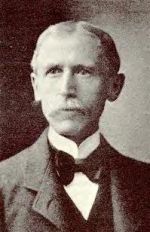 |
Will L. Thompson was born: November 7, 1847 in East Liverpool, Ohio. He died September 20, 1909. World famous composer of popular songs and religious hymns. He owned the Thompson Music Company and in the 1880s opened a music store on the corner of 4th street and Walnut Street in East Liverpool (Former Smith and Phillips building, now the Antique Mall). He began the East Liverpool Historical Society and was a trustee of the Carnegie Public Library. He donated 100 acres of his land to the city of East Liverpool to be used as a public park in 1899. That Park is Thompson Park and very much in use today. |
The Thompson Music Store Northwest corner of 4th Street and Walnut Street.
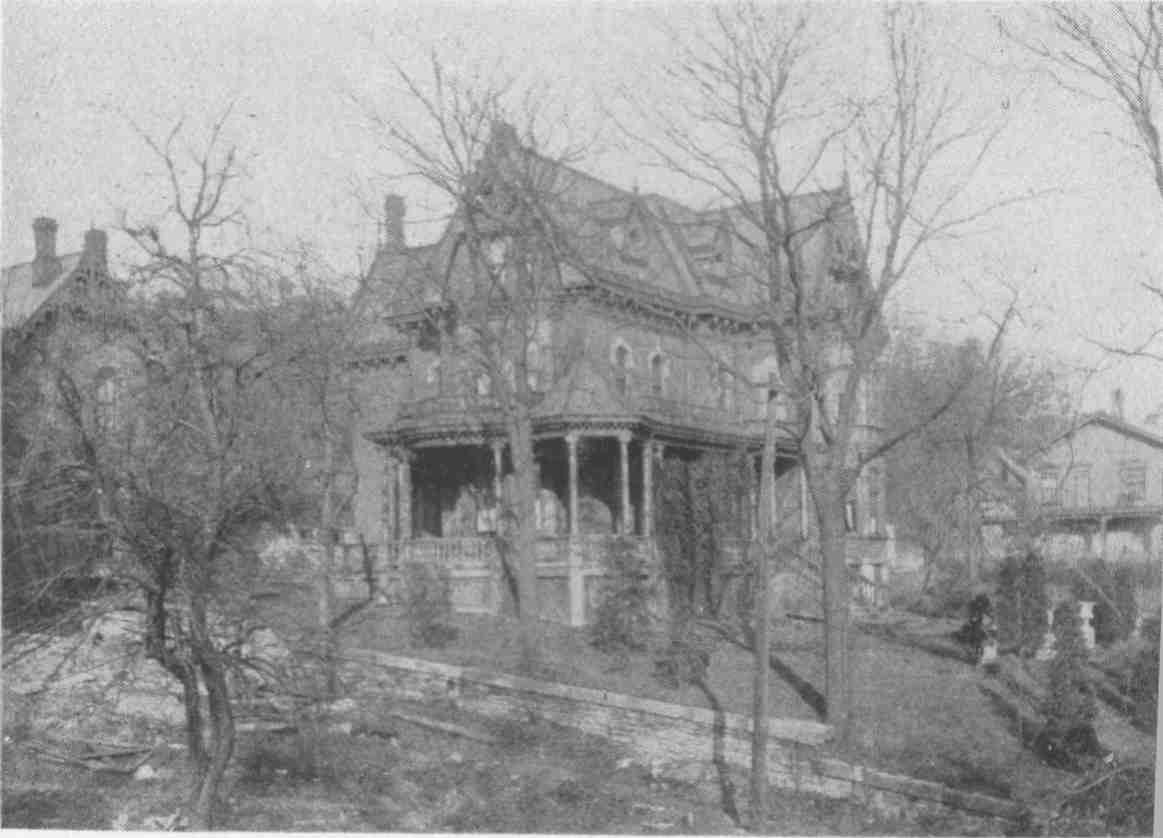
The above house is described as the Will Thompson house.
Thompson here, Thompson there, Thompson everywhere 2
This site is the property of the East Liverpool Historical Society.
Regular linking, i.e. providing the URL of the East Liverpool Historical Society web site for viewers to click on and be taken to the East Liverpool Historical Society entry portal or to any specific article on the website is legally permitted.
Hyperlinking, or as it is also called framing, without permission is not permitted.
Legally speaking framing is still in a murky area of the law though there have been court cases in which framing has been seen as violation of copyright law. Many cases that were taken to court ended up settling out-of-court with the one doing the framing agreeing to cease framing and to just use a regular link to the other site.
The East Liverpool Historical Society pays fees to keep their site online. A person framing the Society site is effectively presenting the entire East Liverpool Historical Society web site as his own site and doing it at no cost to himself, i.e. stealing the site.
The East Liverpool Historical Society reserves the right to charge such an individual a fee for the use of the Society’s material.